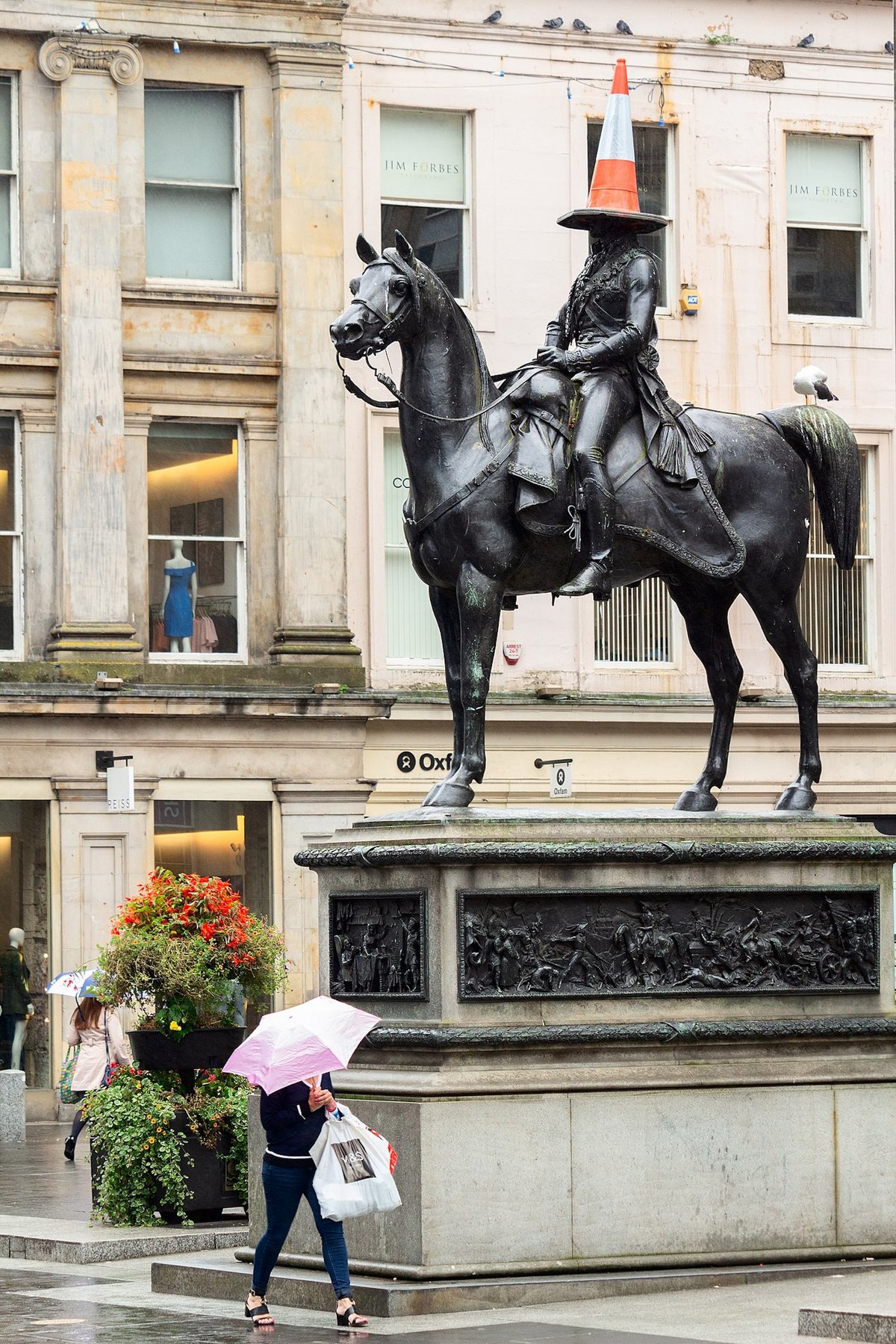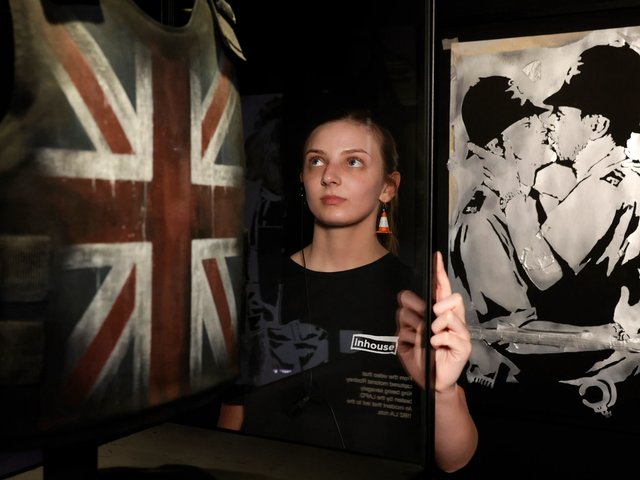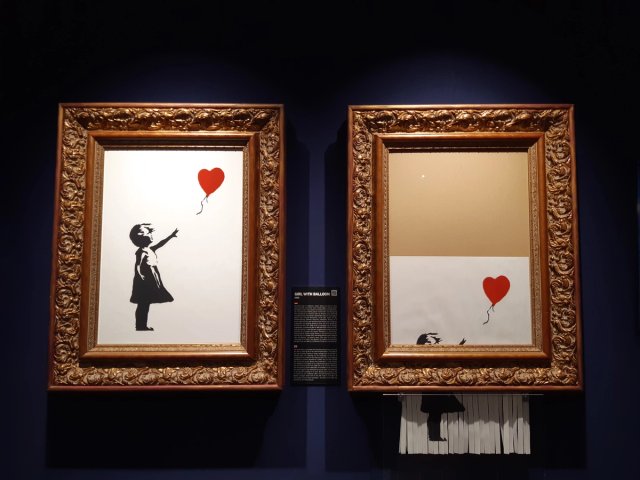The Gallery of Modern Art in Glasgow (Goma) attracted 180,000 visitors during its ten-week run of an exhibition by the enigmatic artist Banksy. Representatives for Goma told the BBC that Banksy's first official solo show in 14 years broke box-office records for the institution.
Cut & Run: 25 Years Card Labour, which closed today, takes a behind-the-scenes approach to the artist’s subversive, political practice, including a detailed model explaining the mechanism that allowed Banksy to remotely shred his Girl with Balloon painting live at a Sotheby’s auction in London in 2018.
Cut & Run will now go on tour (exactly where is up to the public), featuring culturally significant examples from the artist’s oeuvre, like the Union Jack-emblazoned stab-proof vest Stormzy wore to headline the 2019 Glastonbury Festival, and a piece from an installation in the West Bank that depicts an Israeli soldier and a Palestinian citizen pillow-fighting. Complete with stencils and original sketches, Cut & Run provides insight into the mind of a notoriously private artist whose last face-to-face interview took place in 2003.
"Cut & Run has welcomed a new and diverse audience, from primary-school pupils to octogenarians, from all areas of society and corners of the globe," Gareth James, manager of Goma, told the BBC. "Every day, we open our doors to queues of hundreds of people waiting for walk-up tickets. Free community tickets and overnight opening hours have extended the museum's reach far beyond our usual scope."
Visitors were banned from using recording devices, including phones, but according to the musuem's management, people “embraced” the policy, adding to the air of mystery cultivated by Banksy himself, a long-time proponent of his own anonymity.
Banksy announced why he had decided to host Cut & Run at Goma in signage welcoming visitors to the exhibition: his favourite work of art in the UK stands directly outside the venue—a statue of the Duke of Wellington on horseback. For decades, irreverent Glaswegian tradition has inspired locals to place a traffic cone on the statue’s head. “Despite the best efforts of the council and the police, every time one is removed another takes its place,” writes the artist.





